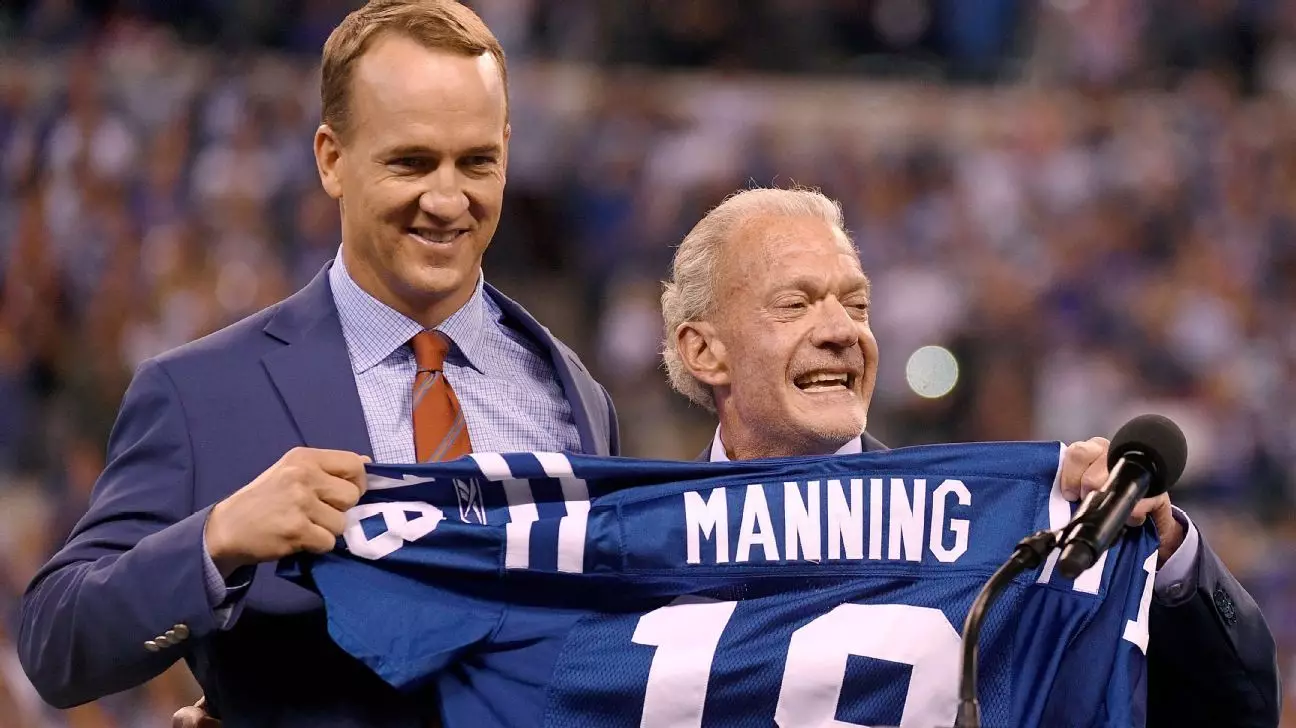The narrative surrounding Jim Irsay, owner of the Indianapolis Colts, is as riveting as the games played on the gridiron. His untimely passing at the age of 65 recently spotlighted not only his influence on the franchise but also his profound impact on the city of Indianapolis. When Peyton Manning arrived as a rookie in 1998, he stepped into a landscape where basketball and auto racing held dominion. The Colts were hardly a focal point; instead, they were an afterthought in the shadow of mighty sports like the NBA’s Pacers and the legendary Indy 500. Jim Irsay’s vision was pivotal in flipping the script on this narrative, reshaping both the Colts’ fortunes and the city’s identity.
Manning himself highlighted this transformation in a recent ESPN appearance, suggesting that Irsay’s commitment to excellence was a significant catalyst for this change. It is true that Indianapolis merely tolerated its football team before the dawn of Irsay’s ambitious era. However, the fervor surrounding the Colts began to swell, thanks to Irsay’s calculated strategies and investments aimed at creating a winning culture. This was more than just sports management; it was building a legacy that would cement Indianapolis as a football town.
The Bold Moves that Changed the Game
Jim Irsay’s approach to management was not merely about drafting star players or tightening the roster; it revolved around the bigger picture of community engagement and cultural repositioning. A prime example occurred when Irsay brought in Bill Polian, a seasoned executive with a proven track record for revitalizing franchises. Under Irsay’s ownership, Polian revamped the Colts’ structure, leading to strategic drafts that included the likes of Edgerrin James and the retention of Marvin Harrison—cornerstones that would contribute to Indianapolis emerging as a formidable team in an increasingly competitive league.
But what stands out the most is Irsay’s ability to instill a sense of loyalty among fans. Even while the team flirted with relocation in the early 2000s, the commitment from Irsay to remain anchored in Indianapolis showcased resilience amidst adversity. Irsay understood better than anyone that moving to Los Angeles or another city could provide short-term benefits but would forsake a burgeoning relationship with the local community. In anchoring his vision with a new stadium—Lucas Oil Stadium—he not only provided a state-of-the-art facility but also an emotional promise that the team would thrive at home.
The Ripple Effect: Super Bowls and Beyond
Winning Super Bowl XLI in 2007 was a triumph that heralded a new era of sports success for the city. It became not just about football but also about tourism, economic development, and civic pride. Indianapolis transformed into a venue for significant sports events and was forever branded as a competitive city in the national context. The hosting of the Super Bowl in 2012 only solidified this identity and showcased Indianapolis as a premier destination for athletic competitions.
Such accolades translate to meaningful impacts on local businesses, increased visitor numbers, and an enhanced sense of community identity. The pride woven into the fabric of a city that once primarily revered basketball also deepened the relationship between the fans and the team. Soccer jerseys replaced racing jackets in the stands, demonstrating a cultural shift driven by Irsay’s leadership and vision. The ripple effects of these changes extend far beyond mere statistics; they have redefined how Indianapolis sees itself.
The Personal Legacy
Manning’s reflective remarks on his complex relationship with Irsay following his release in 2012 provide an intimate glimpse into the human dimensions of sports leadership and ownership. For every success that Irsay orchestrated, nuances of human emotion and professional rivalry lingered in the air. They can serve as an illustration of the multifaceted responsibilities that those at the top must navigate. Irsay was not just a businessman but a powerful figure who made life-altering decisions that shaped the destinies of players and the hometown.
In this dance of emotions and aspirations, Manning acknowledged being “indebted” to Irsay—a reflection of gratitude intertwined with melancholy. It speaks volumes about the intricacies of relationships forged in the fires of competition and glory. The ending of their collaboration did not extinguish the legacy of Irsay’s contributions, instead emphasizing both the highs and lows that come with the territory of sports royalty. In an era where the landscape of sports is changing, Irsay’s blueprint for Indianapolis serves as a vivid testament to how vision, community, and the pursuit of excellence can intertwine to create a lasting legacy.

